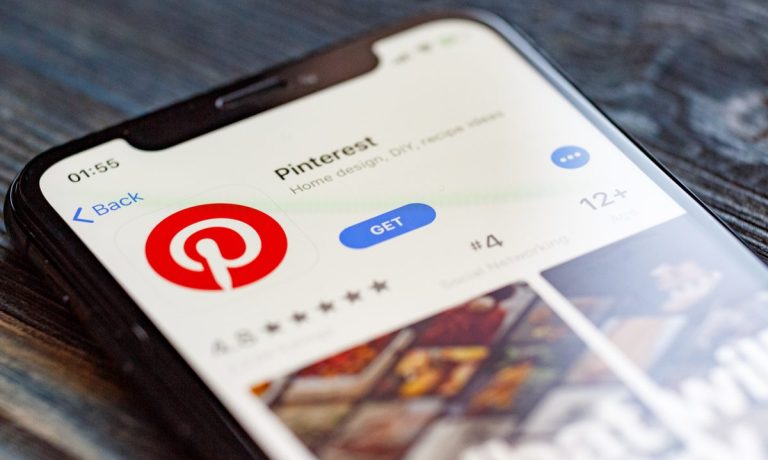The move follows the increasing popularity of video-based platforms like TikTok and Reels, pushing Pinterest to update its image pinboard. As a result, the platform has introduced Idea Pins that prioritize video content and has also placed greater emphasis on content created by its users.
The move also aligns with PYMNTS research from the end of last year, which predicted that online sellers would prioritize social media channels in 2023. The research revealed that about 47.9% of online sellers intend to rely more on platforms such as Instagram and TikTok for sales and marketing activities.
However, prior to Pinterest’s disappointing revenue results in the last quarter, some of its creator-focused initiatives were scaled back.
In contrast, Amazon’s digital advertising division performed strongly during the same period, experiencing a 19% increase to reach $11.6 billion.
Similar to many other technology firms, Pinterest has faced challenges posed by broader macroeconomic conditions. However, the company has made a commitment to adapt to the shifting landscape. In a bid to reduce expenses, Pinterest also let go of 150 employees in February.
Advertisement: Scroll to Continue
Completing the Experience
For several years, Pinterest has been striving to link product inspiration with purchases. The newly established partnership with Amazon could pave the way for a smoother buying process for consumers. Amazon shoppers may enjoy a more seamless experience, as they will not have to spend time completing forms, as the company typically stores their payment details. As a result, checkouts may be completed more rapidly compared to other eCommerce sites.
Whenever users encounter an Amazon advertisement on Pinterest, they will be directed straight to the Amazon platform to finalize their purchase, according to a statement by Pinterest.
“Over 463 million people come to Pinterest each month to create a life they love. Brands and products are a critical piece of this journey, enabling Pinners to move easily from inspiration to action and advertisers to realize value in connecting with users with high commercial intent,” Pinterest noted in its blog post. “Our partnership with Amazon will allow us to scale these efforts in meaningful ways,” it said.
According to Pinterest, the integration of Amazon Ads will occur over several quarters, commencing later this year. At present, the company is uncertain about the locations where the ads will be visible to users. Moreover, it is not providing any short-term predictions regarding the potential revenue impact of the partnership. Pinterest has indicated that the effects of the collaboration will not be substantial until next year.
In the same statement, Amazon SVP Paul Kotas expressed his enthusiasm for the partnership, stating, “Amazon Ads is pleased to collaborate with Pinterest to simplify the process of discovering and purchasing relevant products via shoppable content, while also offering unique value to brands.”
More Than Inspiration and Curation
Earlier in the month, Pinterest revealed that it would be investing further in its shopping tech to retain merchants.
In fact, according to a report from Axios on April 12, Bill Watkins, the chief revenue officer of the social media platform, stated that Pinterest is making investments in technology that “drive the best shopping experience fulfilled by merchants that are already on our platform.”
As Watkins described, Pinterest users are coming to the platform with a specific purpose and intent. As a result, the company is investing in computer vision, machine learning, and artificial intelligence to personalize the shopping experience and facilitate consumer behavior.
“When you take a look at what they’re doing on the platform, it’s categories that you really can’t engage with absent retail,” Watkins told Axios, adding that shopping ad catalogs account for Pinterest fastest-growing revenue stream.
According to the report, Pinterest has abandoned its plans to implement a direct checkout solution, which company officials had previously discussed testing as a means to become more “shoppable.”
As an alternative, Pinterest has opted to use mobile deep linking to directly send users to the checkout function within the merchant’s app, eliminating the inconvenience of multiple clicks, as stated by Watkins.
See also: Pinterest Invests in Shopping Tech to Retain Platform’s Merchants
In the previous month, Pinterest revealed its plan to incorporate shopping features into Shuffles, a collage-making app that stands on its own. Users can now click on each item within a collage to view its brand, price and comparable products.
In the announcement of Shuffles, Pinterest emphasized the app’s fun and interactive qualities as distinguishing features from other product exploration tools. The company also noted that Gen Z users are driving the creation and curation of fresh and relevant content, which is contributing to a marketplace of trendy and shoppable ideas.
See also: Pinterest Adds Shopping Features to Collage-Making App Shuffles
How Pinterest Finished the Quarter
Pinterest exceeded expectations in its Q1 revenue and earnings, recording a 5% year-over-year increase to reach $603 million, which surpassed the anticipated figure of $598 million. Moreover, the company’s adjusted EPS of $0.08 was higher than the estimated $0.02.
The number of global monthly active users also increased by 7% year over year to 463 million. However, the company’s GAAP net loss in Q1 was $209 million, equivalent to 31 cents per share, which is up from 1 cent per share during the same period last year.
Despite surpassing earnings expectations, Pinterest’s stock value fell by 6% due to higher costs anticipated for Q2.




